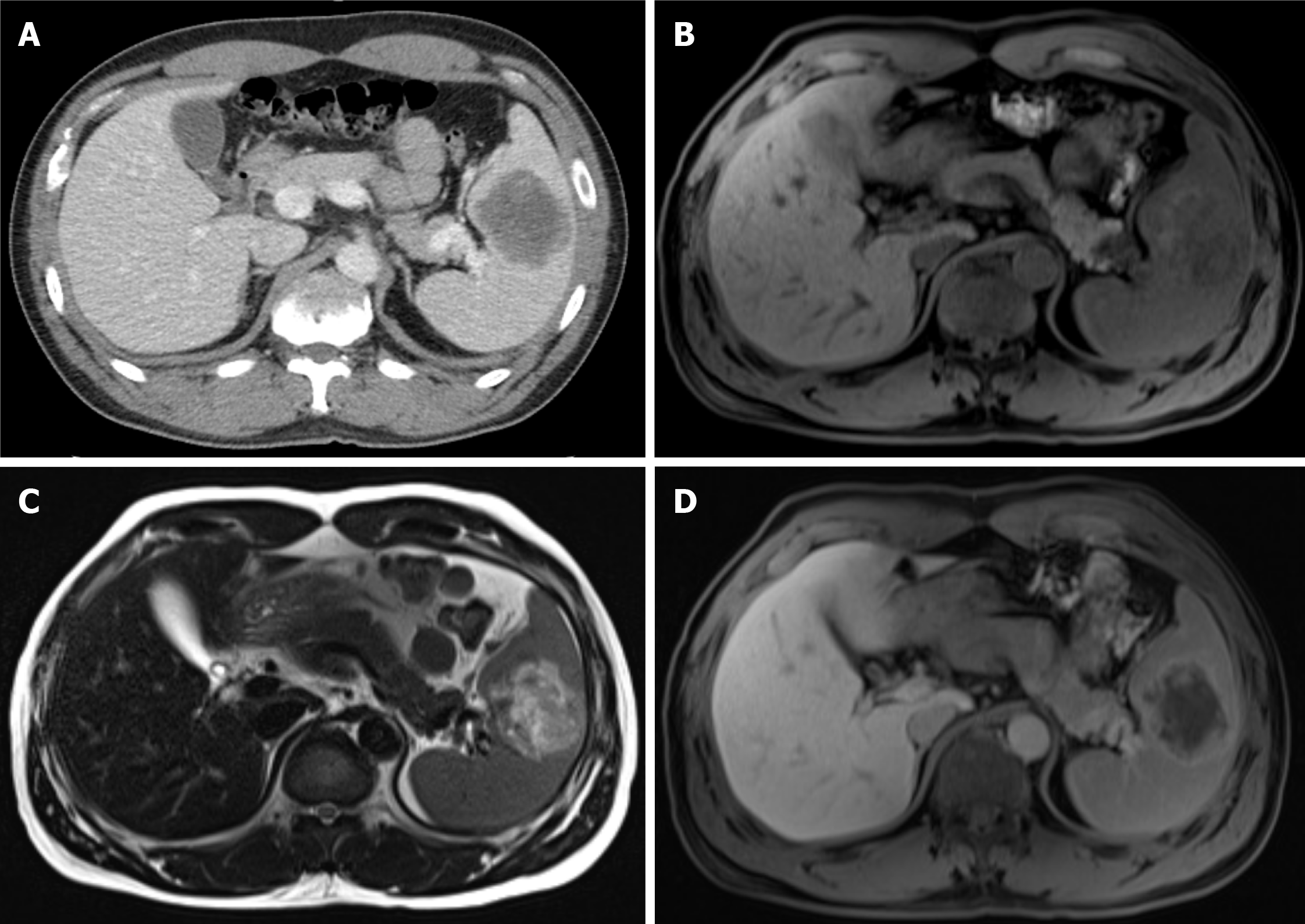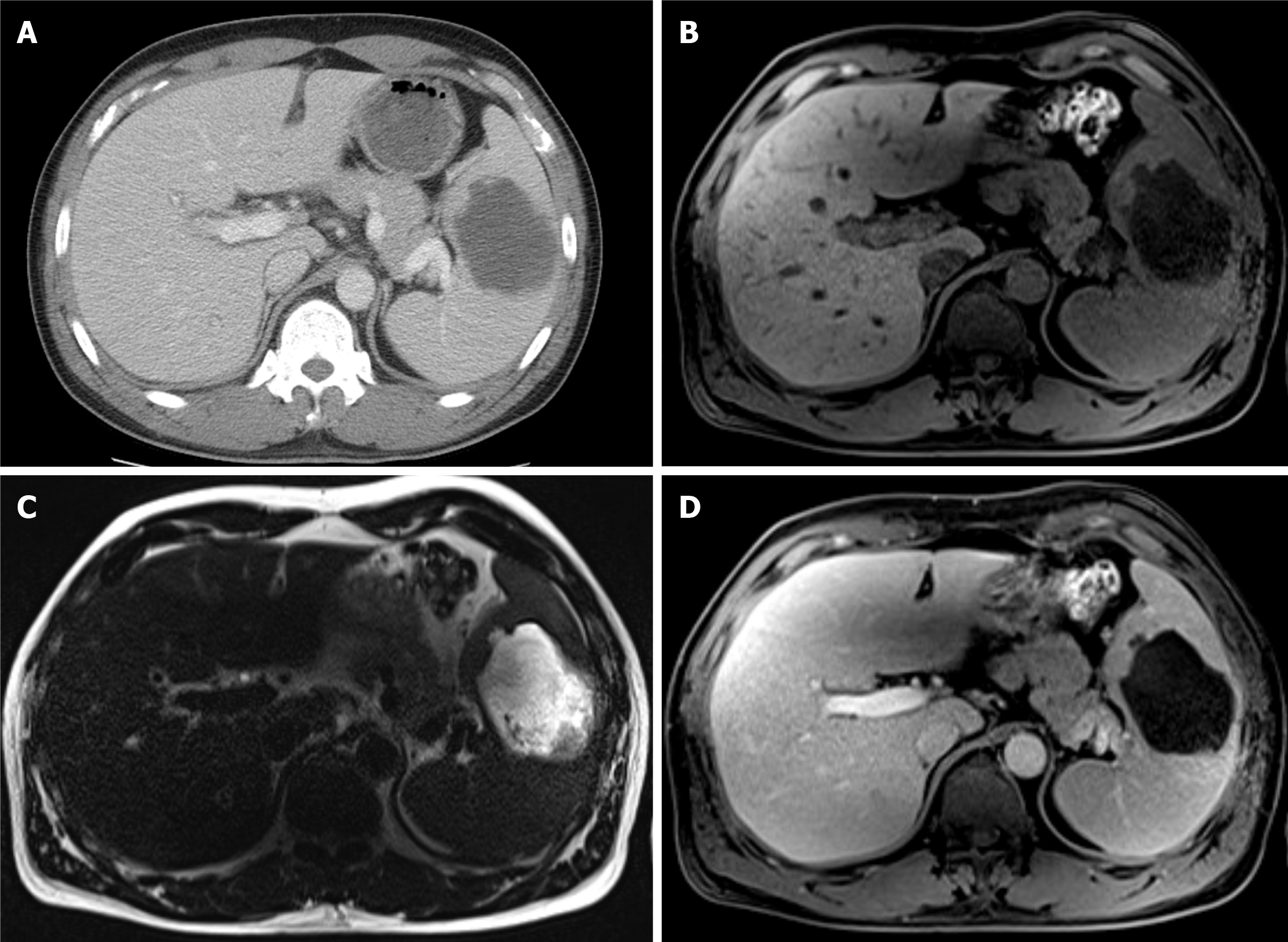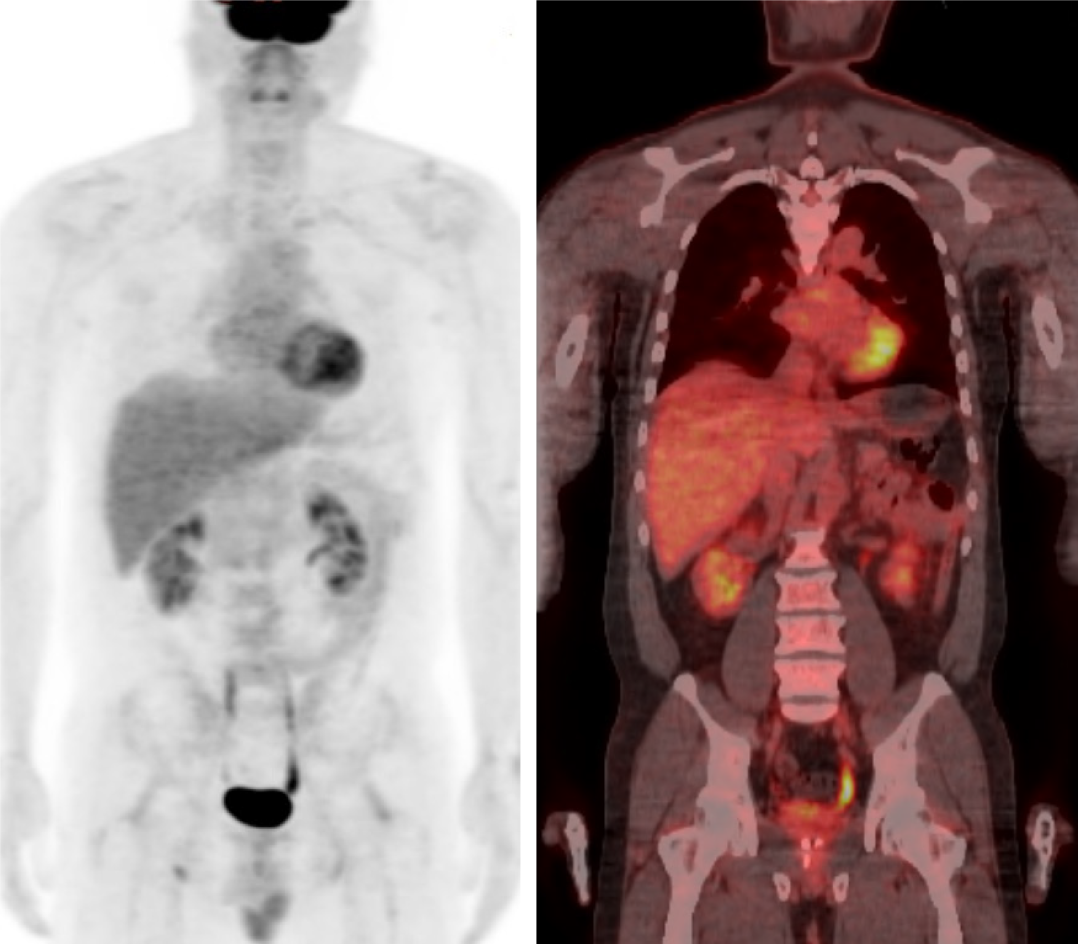Copyright
©The Author(s) 2021.
World J Gastroenterol. Feb 28, 2021; 27(8): 751-759
Published online Feb 28, 2021. doi: 10.3748/wjg.v27.i8.751
Published online Feb 28, 2021. doi: 10.3748/wjg.v27.i8.751
Figure 1 Initial abdominal computed tomography and magnetic resonance imaging findings.
A: Post-contrast phases of abdominal computed tomography showed a 6 cm-sized hypodense mass with peripheral enhancing rim in the spleen; B: T1-weighted abdominal magnetic resonance imaging showed a 6 cm-sized heterogeneously hypointense splenic mass; C: T2-weighted image showed heterogeneous hyperintense signal of this lesion; D: Gadolinium-enhanced T1-weighted image showed peripheral enhancement and a central hypo-enhancing lesion.
Figure 2 Endoscopic ultrasound finding of the splenic mass.
A: Endoscopic ultrasound showed a well-demarcated, heterogeneously hypoechoic mass without evidence of necrosis in the spleen; B: Endoscopic ultrasound-guided fine needle biopsy using a 22G needle was performed.
Figure 3 Abdominal computed tomography and magnetic resonance imaging at the readmission.
A: Abdominal computed tomography revealed a 7 cm-sized low-density lesion; B: T1-weighted magnetic resonance imaging (MRI) revealed a 7cm-sized hypointense mass with a lower signal compared to the initial MRI; C: T2-weighted MRI revealed much higher signal intensity of this lesion compared to the initial MRI with non-enhancing debris or necrotic portions inside; D: Gadolinium-enhanced T1-weighted image revealed a much lower signal lesion with minimal peripheral enhancement suspecting a capsule development, suggestive for abscess formation.
Figure 4 Gross and microscopic findings of the resected splenic mass.
A: Laparoscopic splenectomy showed about 6 cm-sized mass with central necrosis and abscess formation; B: Microscopic findings showed diffuse large B-cell lymphoma (hematoxylin-eosin staining, × 200).
Figure 5 18F-fluorodeoxyglucose-positron emission tomography after splenectomy showed no other organ involvement of lymphoma.
- Citation: Cho SY, Cho E, Park CH, Kim HJ, Koo JY. Septic shock due to Granulicatella adiacens after endoscopic ultrasound-guided biopsy of a splenic mass: A case report. World J Gastroenterol 2021; 27(8): 751-759
- URL: https://www.wjgnet.com/1007-9327/full/v27/i8/751.htm
- DOI: https://dx.doi.org/10.3748/wjg.v27.i8.751













